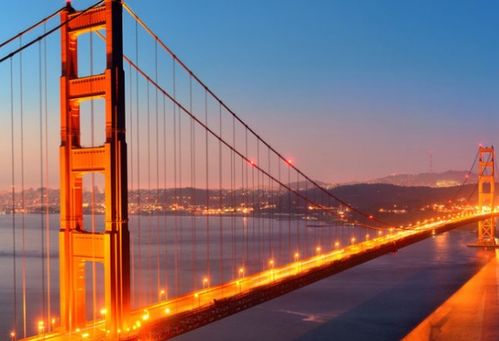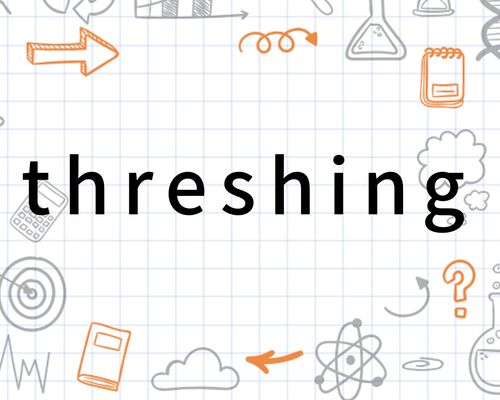揭秘“bridge”在英文中的真正含义
Bridge英文什么意思

The word "bridge" has a rich and multifaceted meaning in English, encompassing both literal and metaphorical senses. At its core, a bridge is a structure that spans a physical gap, such as a river, canal, or other obstacle, allowing people, vehicles, or trains to cross from one side to the other. However, the concept of a bridge extends far beyond its literal construction, embodying ideas of connection, transition, and unity.

The Literal Meaning of Bridge
In its most straightforward sense, a bridge is an engineered structure designed to provide passage over an obstacle. These structures can vary greatly in size, complexity, and material. Some of the most famous bridges in the world include:

The Golden Gate Bridge in San Francisco, United States, a suspension bridge that spans the Golden Gate Strait.

The Tower Bridge in London, England, a combined bascule and suspension bridge over the River Thames.
The Great Belt Bridge in Denmark, a series of bridges and tunnels connecting the islands of Zealand and Funen.
Bridges can be classified based on their design and construction method, such as suspension bridges, arch bridges, beam bridges, and cable-stayed bridges. Each type has its unique engineering challenges and aesthetic appeal.
The Metaphorical Meaning of Bridge
Beyond its physical manifestation, the word "bridge" carries a powerful metaphorical weight. It symbolizes the idea of creating a connection or link between two separate entities, whether these are people, ideas, cultures, or situations.
1. Connecting People
A bridge can represent the establishment of communication and understanding between individuals. In personal relationships, building a bridge might involve overcoming differences, resolving conflicts, or simply finding common ground. In a broader sense, bridges can facilitate social cohesion by promoting mutual respect and empathy.
2. Facilitating Transition
The concept of a bridge also applies to moments of transition in life. When people face significant changes, such as moving to a new city, starting a new job, or experiencing a major life event, they may need to "build a bridge" to help them navigate the transition. This might involve seeking support, developing new skills, or adopting a positive mindset.
3. Uniting Cultures
In a globalized world, bridges are essential for fostering cultural understanding and cooperation. They can be physical structures, like international bridges that connect different countries, or symbolic gestures, like cultural exchanges and diplomatic initiatives. By celebrating diversity and promoting mutual learning, bridges help to build a more inclusive and interconnected world.
The Role of Bridges in Communication
In the field of communication, the metaphor of a bridge is particularly apt. Effective communication often requires establishing a connection between two or more parties who may have different perspectives, backgrounds, or goals. A "bridge" in this context refers to the strategies, skills, and tools that facilitate this connection.
Active Listening
Active listening is a crucial bridge-building skill. It involves fully concentrating, understanding, responding, and then remembering what is being said. By demonstrating empathy and respect, active listening helps to create a safe and open environment for dialogue.
Clarity and Conciseness
Clear and concise communication is another essential bridge. When messages are ambiguous or overly complex, they can create barriers to understanding. By using simple language, avoiding jargon, and structuring information logically, communicators can build stronger connections with their audience.
Nonverbal Communication
Nonverbal cues, such as body language, facial expressions, and eye contact, also play a vital role in bridge-building. They can convey emotions, attitudes, and intentions that are not explicit in verbal communication. By paying attention to nonverbal signals, communicators can better understand each other and strengthen their connections.
The Symbolism of Bridges in Literature and Art
Bridges have long been a powerful symbol in literature, art, and other creative expressions. They often represent themes of connection, separation, transition, and hope.
In Literature
Many classic works of literature feature bridges as central symbols. For example, in Robert Frost's poem "The Road Not Taken," the speaker faces a fork in the road, which could be interpreted as a metaphorical bridge between different life paths. Similarly, in Harper Lee's novel "To Kill a Mockingbird," the town of Maycomb is divided by a creek, and the bridge that spans it symbolizes the struggle for racial equality and social justice.
In Art
Bridges are also common subjects in visual art, including painting, photography, and sculpture. Artists often use bridges to explore themes of human connection, the passage of time, and the relationship between nature and human-made structures. The iconic painting "The Starry Night" by Vincent van Gogh, for instance, features a dreamy bridge that seems to connect the earthly realm with the celestial one.
Modern Applications of Bridge Metaphors
In today's world, the metaphor of a bridge is still relevant and widely used. It continues to inspire innovation, foster collaboration, and promote social progress.
Technology and Innovation
In the tech world, bridges are often used to describe the integration of different systems, platforms, or devices. For example, a "bridge" between two software applications might allow them to communicate and share data seamlessly. Similarly, in the field of robotics and automation, bridges are essential for connecting machines to the Internet of Things (IoT) and enabling them to interact with their environment.
Global Cooperation
In international relations, bridges are crucial for fostering cooperation and addressing global challenges. By building bridges between nations, governments, and organizations, we can work together to tackle issues like climate change, poverty, and conflict. This requires open dialogue, mutual respect, and a commitment to common goals.
Personal Development
In personal development, building bridges often involves overcoming internal barriers, such as fear, doubt, or self-limiting beliefs. By cultivating resilience, mindfulness, and self-awareness, individuals can build stronger connections with themselves and others, leading to greater happiness and fulfillment.
Conclusion
In summary, the word "bridge" has a rich and nuanced meaning in English, encompassing both literal and metaphorical senses. As a physical structure, a bridge provides passage over an obstacle, allowing people and vehicles to cross from one side to the other. As a metaphor, a bridge represents the establishment of connections, transitions, and unity. Whether in communication, literature, art, technology, or personal development, the concept of a bridge remains a powerful and inspiring symbol of connection and progress.
- 上一篇: 打造美味番茄排骨汤的步骤
- 下一篇: 轻松指南:如何办理失业登记证明
-
 揭秘:汉堡包在英文中的真正含义是什么?资讯攻略11-17
揭秘:汉堡包在英文中的真正含义是什么?资讯攻略11-17 -
 揭秘“Sausage”在英文中的真正含义资讯攻略11-07
揭秘“Sausage”在英文中的真正含义资讯攻略11-07 -
 揭秘“Fashion”在英文中的真正含义资讯攻略10-29
揭秘“Fashion”在英文中的真正含义资讯攻略10-29 -
 揭秘:“sea”在英文中的真正含义资讯攻略11-22
揭秘:“sea”在英文中的真正含义资讯攻略11-22 -
 揭秘“skirt”这个英文单词的真正含义资讯攻略11-14
揭秘“skirt”这个英文单词的真正含义资讯攻略11-14 -
 揭秘“forever”英文单词的真正含义资讯攻略11-26
揭秘“forever”英文单词的真正含义资讯攻略11-26












